Best Sheet Music download from our Library.
Tchaikovsky Symphony No. 6 “Pathètique” , 4th Movement Easy Piano solo with sheet music

The “Symphony No. 6 in B minor” (Pathetic) Op.74 was composed between February and August 1893. It premiered in St. Petersburg on October 28, 1893 conducted by the composer himself. Pathetic’s name was given by his brother Modest a few days before its premiere.
Please, subscribe to our Library.
If you are already a subscriber, please, check our NEW SCORES’ page every month for new sheet music. THANK YOU!
Exactly the name suggested in Russian is papetichesky, which means pompous, passionate, emotional, not exactly corresponding to the meaning of our word pathetic. Although the composer initially liked the subtitle, two days later he asked his publisher to remove it. However, the work was published under the name Symphonie pathétique.
The work was dedicated to his nephew Vladimir Davidov, known as Bob, son of his sister Alexandra, who died shortly before Tchaikovsky’s trip to America. Although he did not leave any written comment on the meaning of the work, it can be understood that it is a programmatic work, reflecting his own feelings.
In this work, Tchaikovsky managed to bring together the two prevailing trends in symphonic music at the end of the 19th century. On the one hand it was a work of pure music and on the other programmatic. On February 10, 1893, he wrote his nephew Bob a letter announcing that he had started a new programmatic symphony. ‘But that program is full of subjective feelings and often while composing it, my eyes filled with tears.’
It is possible that it is an autobiography of the composer himself, narrating his beginnings, his struggles, triumphs and his final fall. In the description of the work, we will give our own personal version of the meaning of the symphony.
The first movement begins with an adagio. A somber bassoon solo opens the work. A nervous motif will lead to the first theme of the allegro ma non troppo. The second theme of sonata form is a heartfelt melody delivered by the strings with passionate lyricism. A loud burst from the orchestra starts the development section. During it the themes are taken to the maximum expressiveness. The coda ends with the winds intoning a chorale.
It begins by showing us the sad fate of our hero. But he is still young and thinks of a bright future. He looks for love and it seems that he finds it. He expresses the sweetness of the loved one, but with the melancholy that the idea of losing him produces.
We feel the struggles that life brings him, from which he initially manages to emerge triumphant. But he also feels the failures, becoming despondent. But he again awakens his love, leading him to moments of great intimacy and sweetness. Our hero seems to have triumphed, but it will only be an illusion.
The second movement allegro con grazia is written in the form of a lied A, B, A. The first theme is in the form of an elegant waltz. The central part contrasts with its intimate form, using melancholic notes. Then the waltz resumes, ending with a quiet coda in which painful sighs appear.
It seems that love has triumphed, and it presents us with our hero dancing in an elegant and illuminated room with the being of his dreams. In an intermission of the dance, intimate feelings are confessed, expressing their need to love. The dance resumes, but doubts assail him at the end, fearing that his happiness may end.
The third movement allegro molto vivace corresponds to the scherzo. It is composed of a theme in the form of a march. It culminates in a long crescendo based on the march theme that leads into a series of embellishments. The march is then solemnly resumed, bringing it to its climax. A brilliant coda closes the movement.
Our hero has reached his peak. Dragged by the force of love, it seems that nothing and no one can stop him. His march is powerful, overwhelming.
He ends with the mournful walking tragic. The first theme shows his bitterness in descending scales. The second theme also expresses sadness, but with a feeling of resignation. The call of destiny is dragging him towards death. In the final coda the notes descend, each time lower in a devastating way, until ending only with the notes of the cellos and double basses.
But suddenly everything has changed. Our hero has lost the most appreciated thing, love. The feeling of loneliness invades him. He feels destroyed, without strength at all. A comforting vision comes before him, but he finds himself unable to save himself. His wails are getting louder. Memories of his past happiness drive him to despair. Fate drags him towards his fatal outcome, from which he cannot escape. He slowly introduces himself into the enigmatic shadows of death.
Tchaikovsky
Tchaikovsky‘s romantic melodies, his passionate life, have captivated the people for several generations. An easy-to-understand sentimental music has made him the most popular Russian musician.
The most outstanding member of the Moscow school continues in a certain way the work carried out by the nationalists, but Westernizing his style, giving it a certain academicism. This does not prevent her from clearly expressing his feelings that appear during his tormented life.
Pyotr Ilyich Tchaikovsky (1840-1893) was born on May 7, 1840, in Kamsko-Votkinsk, a metallurgical center east of Moscow. His father was a mining engineer and the family lived comfortably. At the age of 10 he entered the Saint Petersburg School of Jurisprudence, completing his studies in 1859.
First he was an official of the Ministry of Justice. In September 1862, the Russian Music Society opened a Conservatory in Saint Petersburg under the direction of Anton Rubinstein. Tchaikovsky signs up and begins taking composition classes. He finally decides to leave his civil service job and dedicate himself to music.
In 1866, he moved to Moscow, following the advice of Anton Rubinstein, to take charge of the harmony lessons at the Conservatory that had just been founded, taking the Saint Petersburg Conservatory as a model and under the direction of his brother Nikolai Rubinstein.
A few days after the play’s premiere of the 6th Symphony, Tchaikovsky died of cholera on November 6, according to the official version of events. But it seems that the truth was different, hidden by the biography that his brother Modest made, covering up the real facts.
The investigations of the Russian musicologist Alexandra Orlova show that the truth had been very different. Tchaikovsky committed suicide by poisoning himself with arsenic.
In the fall of 1893 a terrible misfortune occurred in the life of the composer. Duke Stenbok-Fermor was annoyed at the particular attention Tchaikovsky showed his young nephew. He then wrote a letter of accusation against the composer to Jacobi, a high official in the bureaucracy, for transmission to the Tsar. The scandal was served. To avoid this, Jacobi made the decision to form a court of honor at the School of Jurisprudence, made up of former companions of the composer. They asked him to take his own life.

It seems that the arsenic was delivered to him on October 31 by a colleague of his. On November 2, he took it at lunchtime, not calling the doctor until November 3, when the action of the poison was well advanced. Doctors certified his death from cholera. As confirmation, his brother Modest published a note recounting the event falsely. On November 7, his companions from the School of Jurisprudence celebrated a Requiem in his honor.
Best Sheet Music download from our Library.
Browse in the Library:
| Artist or Composer / Score name | Cover | List of Contents |
|---|---|---|
| All Sondheim Vol IV Music and lyrics |
 |
All Sondheim Vol IV Music and lyrics |
| All That Jazz piano-vocal Arrangement |
 |
|
| All The Things You Are (Guitar And Tabs) | All The Things You Are (Guitar And Tabs) | |
| All The Things You Are (Guitar And Tabs) (Musescore File).mscz | ||
| All The Things You Are By Jerome Kern Guitar Transcription |
 |
|
| All The Things You Are Jerome Kern Oscar Hammerstein 2nd 1940 Jazz Standard (Vintage sheet music) |
 |
|
| All Time Standards (Songbook) Jazz Guitar Tablature Chord Melody Solos (Jeff Arnold) |
 |
All Time Standards (Songbook) Jazz Guitar Tablature Chord Melody Solos (Jeff Arnold) |
| All Time Standards Piano (Arr. Gabriel Bock) |
 |
All Time Standards Piano (Arr. Gabriel Bock) |
| All You Need Is Ears George Martin with Jeremy Hornsby 1979 (Book) The story o the recording genius who created The Beatles |
 |
|
| Allan Holdsworth Just for the curious book Guitar with Tablature |
 |
|
| Allan Holdsworth Melody Chords For Guitar |
 |
|
| Allan Holdsworth Super Guitarist with TABs |
 |
Allan Holdsworth Super Guitarist with TABs |
| Alle prese con una verde Milonga (Paolo Conte) | ||
| Allevi, Giovanni – Back To Life |
 |
|
| Allie Wrubel – Gone with the Wind |
 |
|
| Allman Brothers Guitar Songbook |
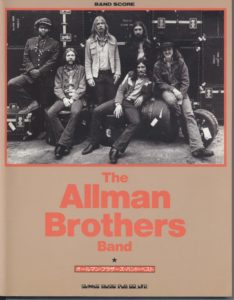 |
Allman Brothers Guitar Songbook |
| Allman Brothers, Best Of The (Piano, Vocal, Guitar) |
 |
Allman Brothers, Best Of The (Piano, Vocal, Guitar) |
| Allman Brothers, The – The Definitive Collection For Guitar Vol 1 with Tablature |
 |
Allman Brothers, The – The Definitive Collection For Guitar Vol 1 |
| Alma Redemptoris Mater |
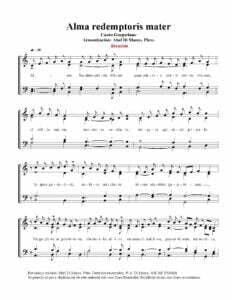 |
|
| Almeno tu nell’universo (Mia Martini) | ||
| Almir Chediak Ivan Lins Guitar Songbook Vol 2 |
 |
Ivan Lins Guitar Songbook Vol 1 by Almir Chediak |
| Alok – Hear Me Now Sheet Music |
 |
|
| Alone together (Howard Dietz & Arthur Schwartz) | Alone together (Howard Dietz Arthur SchwArtz) | |
| Alone Together (Musescore File).mscz | ||
| Alone Togheter Guitar Solo Transcription Jazz Standard |
 |
|
| Alphaville Forever Young (piano & Guitar) |
 |
Alphaville Forever Young (piano & Guitar) |
| Also Sprach Zarathustra Op. 30 – Richard Strauss (Musescore File).mscz | ||
| Alternative Rock Sheet Music Collection |
 |
Alternative Rock Sheet Music Collection |
| Always on my mind – Elvis Presley – easy arrangement for piano, with fingering |
 |
|
| Amadeus – W.A. Mozart (film score arr. for piano solo by D. Fox) |
 |
Amadeus – W.A.Mozart |
| Amadeus (original soundtrack piano solo arrangements) |
 |
Amadeus (Film score book) Piano Solos |
| Amalia Rodriguez FADOS Melodias De Sempre (GUITAR) |
 |
Amalia Rodriguez FADOS Melodias De Sempre (GUITAR) |
| Amando amando (Renato Zero) | ||
| Amar Pelos Dois (Salvador Sobral) | ||
| Amarcord (Nino Rota) | ||
| Amazing Grace – Tradicional (Piano ) |
 |
|
| Amazing Grace Traditional (Jazzy ver. sheet music) |
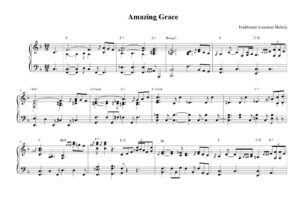 |
|
| Amazing Phrasing – Guitar 50 Ways to Improve Your Improvisational Skills (Guitar TABs Amazing Phrasing) (Tom Kolb) |
 |
Amazing Phrasing – Guitar 50 Ways to Improve Your Improvisational Skills (Guitar TABs Amazing Phrasing) (Tom Kolb) |
| Amelie Poulain – 6 pieces for piano – Yann Tiersen – Yann Tiersen |
 |
 |
| America (My Country ‘Tis of Thee Easy Piano Level 2 |
 |
|
| America Greatest Hits Piano Vocal Guitar chords |
 |
America Greatest Hits Piano Vocal Guitar chords |
| America Greatest Hits (piano & Guitar) |
 |
America greatest |
| America Horse With No Name Piano vocal | America Horse With No Name Piano vocal | |
| America’s Songs The Stories Behind The Songs Of Broadway, Hollywood, And Tin Pan Alley (Philip Furia, Michael Lasser) Book |
 |
|
| American Folk Songs For Guitar with Tablature |
 |
American Folk songs |
| American Folk Songs, My First Book of – Bergerac |
 |
|
| American Indian Melodies A. Farwell Op.11 (1901) |
 |
American Indian Melodies A. Farwell Op.11-min |
| American Pie (sheet music) |
 |
|
| American Popular Music (Book) by Larry Starr and Christopher Waterman |
 |
|
| Americana – Alegre, Magín (Guitarra) | Americana – Alegre, Magín (Guitarra) | |
| Amici Miei (Carlo Rustichelli) | ||
| Amor mio (Battisti) | ||
| Amore bello (Claudio Baglioni) | ||
| Amy Beach – Op.15 Four Sketches in Autumn |
 |
|
| Amy Grant – Breath Of Heaven | ||
| Amy MacDonald This Is The Life |
 |
AMY MACDONLAD |
| Amy Winehouse – Valerie |
 |
|
| Amy Winehouse – Valerie (sheet music) |
 |
|
| Amy Winehouse Amy Amy Amy |
 |
|
| Amy Winehouse Back To Black Songbook |
 |
Amy Winehouse Back To Black Songbook |
| Amy Winehouse Frank Songbook |
 |
Amy Winehouse Frank |
| Amy Winehouse I Heard Love Is Blind |
 |
|
| Amy Winehouse Just Friends |
 |
|
| Amy Winehouse Rehab |
 |
|
| Amy Winehouse You Know Im No Good |
 |
|
| An affair to remember (Harry Warren) | ||
| An American In Paris An George Gershwin (Concert Band)An American In Paris An George Gershwin (Concert Band) Arr. by Naohiro Iwai |
 |
|
| An American Tail – The Marketplace – James Horner | ||
| An Introduction To Bach Studies (eBook) |
 |
|
| An Irish Blessing (Musescore File).mscz | ||
| An Irish Blessing (SATB) Choral | An Irish Blessing (SATB) | |
| Analisis musical claves para entender e interpretar la Música (M. y A. Lorenzo) Español |
 |
|
| Analysis Of Tonal Music An Schenkerian Approach Allen Cadwallader and David Gagné (Book) |
 |
|
| Analyzing Bach Cantatas by Eric Chafe (eBook) |
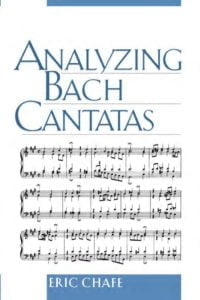 |
|
| Analyzing Schubert by Suzannah Clark (Cambridge Un. Press) (eBook) |
 |
|
| Anastacia Not That Kind Songbook |
 |
Anastacia songbook |
| Anastasia Once Upon A December arr. by John Brimhall (Piano Solo 2 Versions Easy And Intermediate) |
 |
|
| Anastasia Sheet Music songbook Piano & vocal |
 |
Anastasia Sheet Music songbook Piano & vocal |
| Ancora ancora ancora (Mina) | ||
| Ancora qui (Django Unchained) Elisa – Ennio Morricone | ||
| And the Waltz goes on (Anthony Hopkins) | ||
| Andante (from String Quartet op. 22) P. I. Tchaikovsky | ||
| Anderson Freire – So Voce Piano |
 |
|
| Andras Schiff – Music Comes Out Of Silence Book |
 |
|
| Andre Gagnon – L’air Du Soir |
 |
|
| Andre Gagnon – Le Reve De L’automne (sheet music Collection) |
 |
Andre Gagnon – Le Reve De L’automne (sheet music Collection) |
| Andre Gagnon – Les Jours Tranquilles | Andre Gagnon – Les Jours Tranquilles | |
| Andre Gagnon – Meguriai |
 |
|
| Andre Gagnon – Nelligan |
 |
|
| Andre Gagnon – Petite Nostalgie |
 |
|
| Andre Gagnon – Reves D’Automne | Andre Gagnon – Reves D’Automne | |
| Andre Gagnon – The Very Best Of Andre Gagnon (Sheet Music Songbook) |
 |
Andre Gagnon – The Very Best Of Andre Gagnon (Sheet Music Songbook) |
| Andre Gagnon Ciel D’Hiver |
 |
|
| Andre Gagnon Entre Le Boeuf et l’Ane Gris Musique Traditionelle |
 |
|
| André Gagnon L’air Du Soir |
 |
|
| Andre Gagnon Neiges |
 |
|
| André Gagnon Nelligan |
 |
|
| André Gagnon Origami |
 |
|
| André Gagnon Pensées Fugitives |
 |
|
| Andre Gagnon Pensées Fugitives |
 |
|
| André Gagnon Piano Solitude |
 |
Gagnon, André Piano Solitude |
| Andre Gagnon Prologue |
 |
|
| André Gagnon Selection Speciale de chansons (partitions musicales) |
 |
André Gagnon Selection Speciale de chansons (partitions musicales) |
| André Gagnon Un Piano Sur La Mer (Piano Solo Partition Sheet Music) | Gagnon André Un Piano Sur La Mer (Piano Solo Partition Sheet Music) | |
| Andre Popp Paul Mauriat Love Is Blue Piano Solo Arr. |
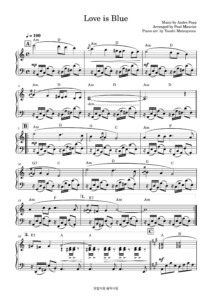 |
|
| André Previn – Play Like André Previn no. 1 |
 |
Andre Previn sheet music |
| Andre Previn – The Genius of (Piano Solos sheet music) |
 |
The genius of André Previn |
| Andre Rieu La Vie Est Belle (Songbook Collection As Performed By André Rieu) |
 |
Andre Rieu La Vie Est Belle (Songbook Collection As Performed By André Rieu) |
| Andrea Bocceli – Time To Say Goodbye | ||
| Andrea Boccelli – Time To Say Goodbye |
 |
|
| Andrea Bocelli Romanza songbook (Guitar & Voice) |
 |
Andrea Bocelli Romanza songbook |
| Andrea Bocelli – Anthology (songbook) |
 |
 |
| Andrea Bocelli – Con te partiro (Time to say Goodbye) Piano Solo arr | Andrea Bocelli – Con te partiro (Time to say Goodbye) Piano Solo | |
| Andrea Bocelli – Con te partiro (Time to say Goodbye) Piano Solo.mscz | ||
| Andrea Bocelli – The Best Of Songbook |
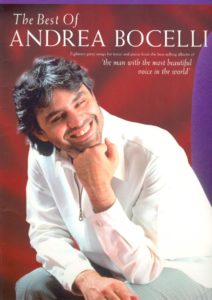 |
Andrea Bocelli best of |
| Andrea Bocelli Celine Dion The Prayer Easy Piano And Vocal By David Foster, Carole Bayer Sager, Alberto Testa And Tony Renis |
 |
|
| Andrea Bocelli Celine Dion – The Prayer – Easy Piano and Vocal by David Foster, Carole Bayer Sager, Alberto Testa and Tony Renis.mscz | ||
| Andrea Bocelli Cieli Di Toscana (Piano, guitar & Vocal) |
 |
Andrea Bocelli Cieli Di Toscana |
| Andrea Bocelli Sogno Songbook |
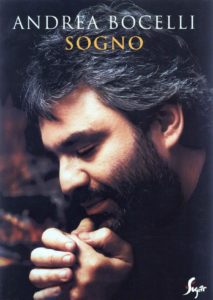 |
Andrea Bocelli sogno |
| Andrea Bocelli The Prayer |
 |
